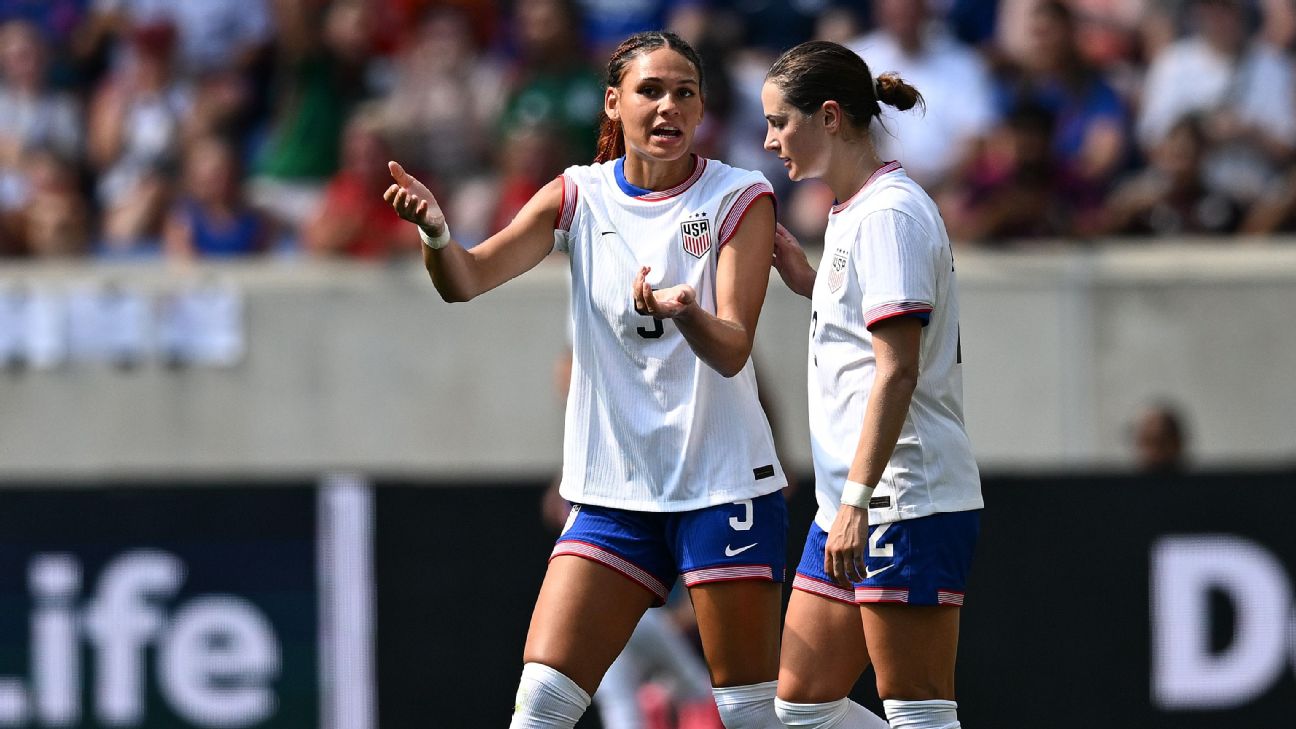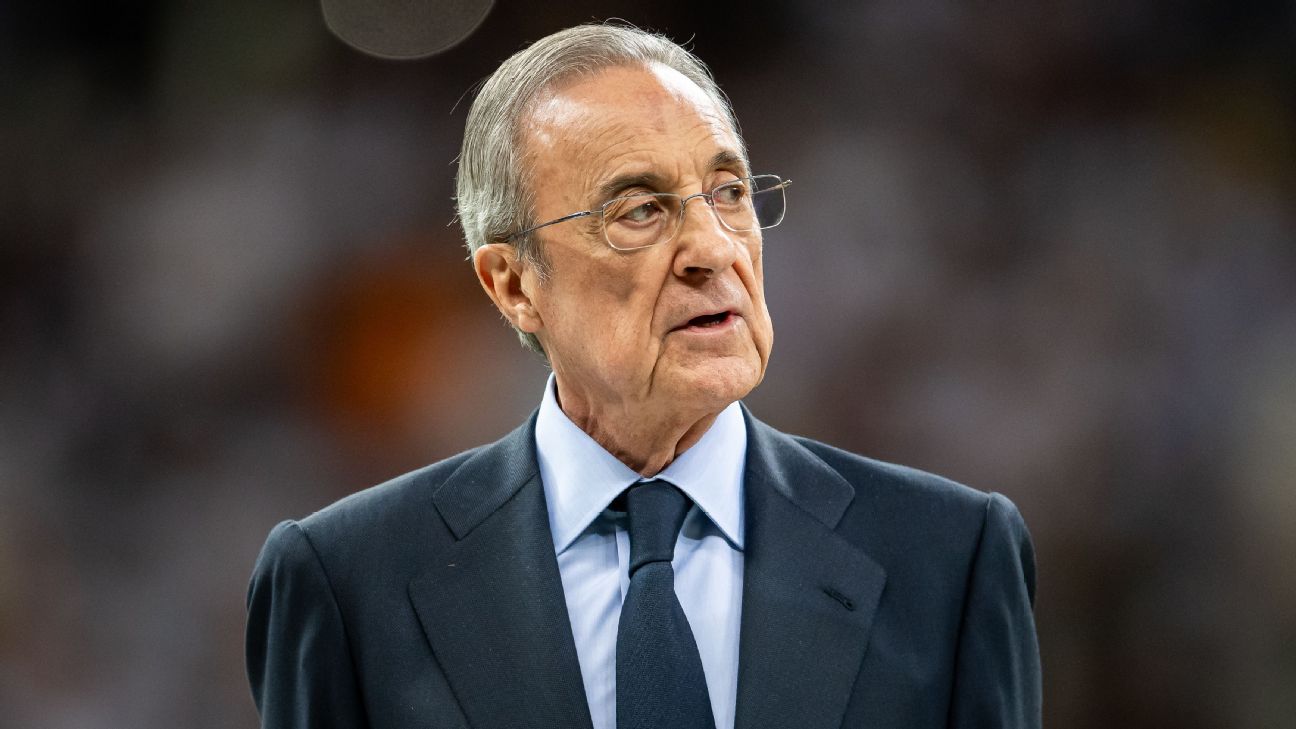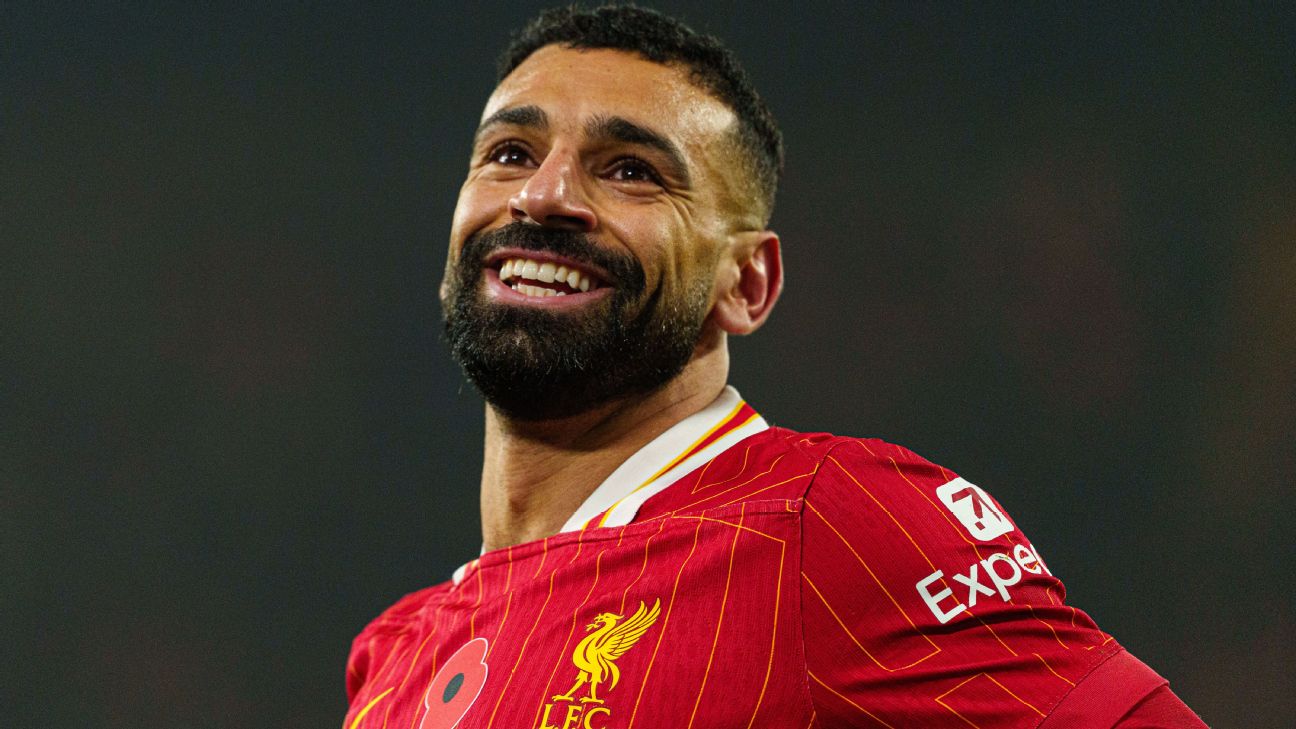The Emma Hayes era of the U.S. women’s national team got off to a fairy-tale start this summer, when the Americans returned to the top of the podium in Paris for the program’s fifth Olympic gold medal. Now comes Hayes’ primary assignment.
She was hired as head coach to win the 2027 World Cup. That is why U.S. Soccer agreed to let her finish the European season with Chelsea before joining the USWNT less than two months before the Olympics.
With an Olympic gold medal in hand, Hayes is now empowered to make drastic changes as she sees fit for the program’s future. Although winning gold suggests the USWNT is in a good place, three years is a lot of time, and Hayes can’t rest on her laurels — every decision she makes will be about the 2027 World Cup.
As the USWNT embarks on its first games since the Olympics, including a friendly against Iceland on Thursday, it is Hayes’ first chance to find answers to the questions plaguing the team ahead of the World Cup in three years’ time. So, what are those questions? We dig into the biggest ones as the USWNT shifts from celebrating its gold medal to long-term rebuilding.
Striking balance of youth vs. veterans
There is a clear core of players who will make up the 2027 World Cup squad, including the dynamic front three of Trinity Rodman, Sophia Smith and Mallory Swanson, who will be 25, 26, and 29, respectively, when that tournament starts. Defender Naomi Girma will be 27 — Hayes has already called Girma “the best defender I’ve ever seen” and has appointed the center-back as captain at various points of matches.
Those players were already cornerstones of the USWNT’s Olympic gold-medal run — but what about the dozens of young, inexperienced players who could be major contributors come 2027?
This is a macro question that will guide every small decision Hayes makes. Hayes has already shown how liberal she plans to be with trialing new players in the USWNT environment. She requested to expand the team’s current training roster by three, to 26 players, and used the additional slots to name three first-time call-ups — two of whom were objectively off the national team radar to most of the public, as they have yet to fully establish themselves in the NWSL.
Hayes strongly suggested that she would have called up even more new players if she wasn’t bound by the restrictions of the USWNT’s collective bargaining agreement, which defines this window as a victory tour and requires all available players from the Olympic roster to be recalled.
“I say it privately more than I do publicly: The U.S. could quite easily put two teams out,” Hayes said. “There’s always, always going to be players that are missing. And there are players that are outside of this roster that equally deserve to be in.”
A futures camp in January will allow a couple of dozen more players to compare themselves to the senior team players and impress Hayes. That camp will be a mix of players mostly 23 and under, possibly with an older player whose NWSL form warrants evaluation.
The U20 USWNT that just finished third at the World Cup featured eight NWSL players, including Kansas City Current midfielder Claire Hutton and Utah Royals forward Ally Sentnor, arguably the readiest for the senior team right now. U20 players were left out of this senior-team camp to allow them to rest.
The catch-22 of giving younger players more looks is that incumbent players will be bumped out. Hayes has long been a coach unabashed by bold or controversial roster decisions. She dropped forward Alex Morgan from the Olympic roster in June after coaching only two USWNT games. (Since then, Morgan has retired and last month announced she is pregnant.)
Hayes repeatedly said over the past week that more of her plan will become clear in January, when she rolls out her 2027-28 road map to the entire staff. That document will include playing styles and ideology that she expects to trickle down to the youth national teams, too.
Developing the USWNT’s goalkeeper succession plan
What happens in goal will serve as a microcosm of Hayes’ remit across the program.
Alyssa Naeher proved again at the Olympics why she is the USWNT’s No. 1 goalkeeper. Naeher made several sensational saves, from the star-jump toe save from point-blank range to deny Germany a 119th-minute equalizer in the semifinal, to sensational saves in stoppage time of each half of the gold medal victory over Brazil. She conceded only two goals in six games at the Olympics.
Naeher, however, will be 39 years old at the next World Cup. Even putting aside age, which arguably factors less for goalkeepers than field players, there is the question of experience for any potential change in net. The USWNT also has a proven track record of both producing sensational goalkeepers and struggling with how to transition to the next one.
Naeher was on the other side of this equation when she took over the starting job following the 2016 Olympics and the suspension of Hope Solo.
Solo had been the USWNT’s starting goalkeeper for the better part of the decade, winning a pair of Olympic gold medals and shining at the 2015 World Cup. She was the best goalkeeper in the world. But that became a problem because so few other goalkeepers saw the field during Solo’s tenure — even in low-stakes friendlies — which left the next generation with limited playing experience at the international level.
Naeher earned her first cap on Dec. 18, 2014. Her only start of 2015 came almost exactly a year later, and then she started two more games ahead of the 2016 Olympics. By the end of the year, she was suddenly thrust into a competition for the starting spot with Ashlyn Harris after Solo was abruptly suspended and effectively kicked off the team permanently.
Naeher had three years to prepare herself for the 2019 World Cup. She faced constant questions about her readiness — partly because her reserved demeanor was the opposite of Solo’s assertiveness, but also because she hadn’t played under the spotlight of a big tournament. The U.S. promptly won the 2019 World Cup — with Naeher in goal every minute of the way.
Now comes a similar dilemma, but with Naeher as the incumbent and a handful of goalkeepers, led by Casey Murphy, as the apprentices. Naeher is older than Solo was at the time of Solo’s removal (which had nothing to do with Solo’s performance, to be fair).
Murphy is only 28 years old and has shown promise for years in the NWSL. She already has 19 caps, which is more than Naeher had when she assumed the No. 1 role. Murphy looked like she might take hold of the No. 1 job in 2022 when she started the World Cup qualifying quarterfinal, but Naeher held onto the role and hasn’t looked back. Naeher is also a rare breed of goalkeeper who confidently buries penalties, too.
Jeff Kassouf joins Futbol Americas to reflect on the legacy of Alex Morgan after the USWNT forward announced her retirement from the game.
None of this is to say that Naeher should be removed as the starting goalkeeper. Her Olympic heroics were less than three months ago, and she hasn’t dipped in form. What Hayes must figure out is how to get multiple goalkeepers ready for 2027 while eventually identifying the starter.
Murphy has the foundation to challenge Naeher for the spot. Jane Campbell, who is one year older, leads the NWSL in saves by a wide margin (for a last-place Houston Dash team) and was the alternate goalkeeper at the Olympics.
There will be plenty of competition at goalkeeper. Will Hayes try to identify who she thinks the 2027 starter is, as of now, and give that goalkeeper the longest possible extensive look? Or is the USWNT slated for a years-long competition in net?
Finding the World Cup-winning midfield combination
The forward line’s “Triple Espresso” combination of Rodman, Smith and Swanson provided the goals, and Girma helped anchor a strong defensive unit in front of Naeher at the Olympics. The performances from the midfield at the Olympics, however, were hit and miss.
That unit was largely anchored by Sam Coffey as the defensive midfielder, with Lindsey Horan and Rose Lavelle in front of her. A suspension for Coffey forced Korbin Albert into the role in the quarterfinal, but it was the gold-medal match where Hayes made the bold call to deploy Albert alongside Coffey, with Horan in a more advanced role — leaving Lavelle on the bench. The plan worked.
Albert had scored a sensational game winner off the bench against Australia in group play, then replaced Horan at the start of extra time against Germany in the quarterfinal. Horan struggled through parts of that game with errant passes, and Germany’s more aggressive disposition from the week prior in the teams’ group-stage meeting stretched out the U.S. midfield. It wasn’t the first time in that tournament that the midfield was stretched defensively or bypassed in possession.
Given that midfield struggles were a key factor in the USWNT’s many problems at the 2023 World Cup under then-coach Vlatko Andonovski, Hayes must figure out the best path forward. She has plenty of choices, making her decisions that much harder — there is abundant skill among the incumbent players and plenty of rising talent waiting in the wings.
Croix Bethune, who was part of the gold-medal-winning team, could be one answer at the No. 10 role once she returns from injury. Bethune tied an NWSL record for assists in a season (10) as a rookie this year despite missing the final two months of the season.
Ashley Sanchez could be the answer, too. She is back in camp for the first time in nearly a year thanks to superlative play with the North Carolina Courage this season.
Albert and Hal Hershfelt are clearly well-regarded by Hayes, Olivia Moultrie is back in camp, and that’s not even to mention whether Hayes will consider Jaedyn Shaw (listed as a forward) as a No. 10, which is her best role. Then add Catarina Macario (not in camp) to the mix if she can get healthy, and she could play as a second striker behind one of the Triple Espresso.
That entire group is age 25 or younger, and there’s a rising generation coming up behind it, with Hutton and the North Carolina Courage’s Riley Jackson among the midfielders leading the way.
Hayes’ calculus won’t just be about age, however. Nor is it solely about individual talent. What is going to be the ideal midfield unit? That is the piece that matters, and what will solidify the spine of the USWNT.
Coffey as a lone holding midfielder might eventually work, and maybe it must if Hayes wants to get her surplus of attacking midfielders on the field. But a double pivot has worked well for the USWNT when it has implemented it in recent years, and there are ways around that being too defensive, like having more of a No. 8 profile (think: Sam Mewis) who drops slightly deeper to provide cover.
Hayes and former interim coach Twila Kilgore have already experimented with a three-back in the past year, which could suit the USWNT by getting more natural midfielders on the pitch. How that midfield unit fits together could be make-or-break to a 2027 World Cup triumph.



